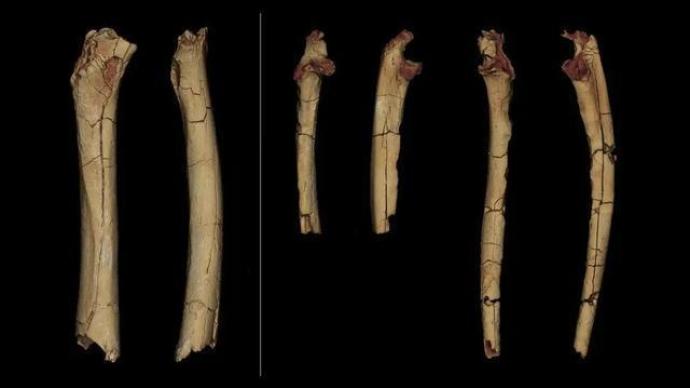
The British "Nature" magazine recently published a paleontological report. Scientists analyzed leg and forearm fossils to show that the earliest known Homo genus, Chad Shah, walked on two feet 7 million years ago. The findings build on previous analyses that have reached similar conclusions.
In 2001, the discovery of a large number of fossils in Chad led to the naming of a new species of the early Homo genus (a taxonomic group that includes extant humans and other extinct relatives), Chad Shah, which dates back to about 7 million years. forward. Analysis of a nearly complete skull at the time of its discovery suggests that the Chad Shah may have been bipedal, a characteristic of Homo as an upright walker. The arm and leg bones found at the same site at the time had not been described before, providing an opportunity to test the hypothesis. 
3D models of these arm and leg bones. From left to right: femur; left and right ulna.
A team of researchers from the University of Poitiers in France provided analysis of a left thigh bone (femur) and a pair of forearm bones (ulna) from the original site where the Chad Shah was discovered in 2001. The authors reveal that the anatomy of the femur suggests that the Shah people of Chad walked on two feet on the ground about 7 million years ago, supporting the prediction of the skull evidence. In addition, the authors emphasize that the ulnar features are consistent with the characteristics of adaptation to climbing, but this conclusion needs to be treated with caution. For example, the functional pattern of the ulna suggests that the Chad Shah could climb up and down trees, possibly through some form of grasping and irregular limb movements.
The team say the evidence suggests that early humans evolved bipedalism shortly after the divergence of humans and chimpanzees, while retaining skeletal features that allowed climbing.
(Original title "7 million years ago! The earliest known time of human beings is determined to walk upright")